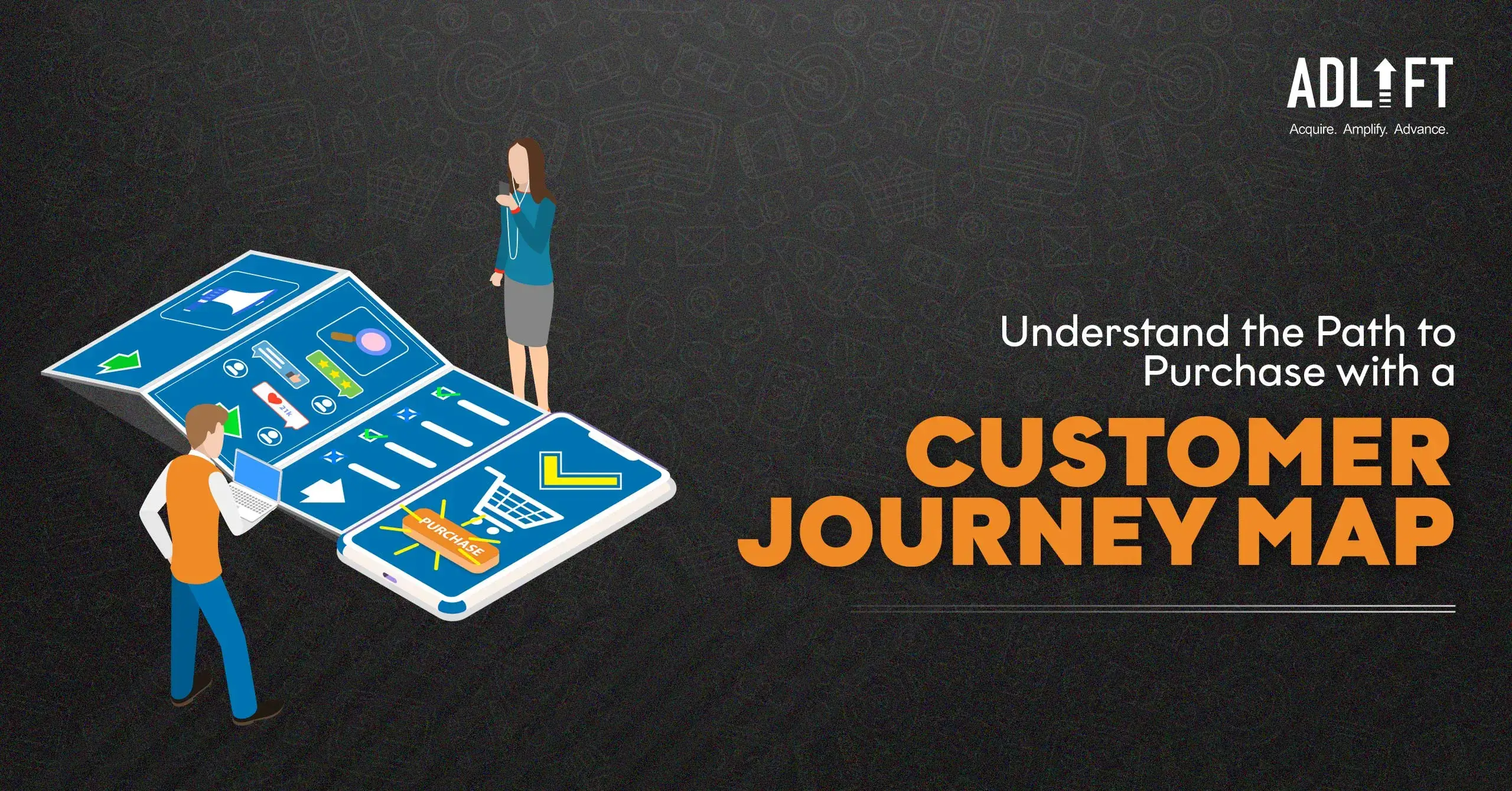Understand the Path to Purchase with a Customer Journey Map

How well do you know your customers? Do you know what makes them tick? What factors affect their purchase decisions? What drives that final conversion? How do you track all of this?
Understanding your customers’ journey (the complete path from initial awareness to purchase and beyond) is paramount. Research by McKinsey & Company highlights that companies that excel in their customer journey planning achieve up to a 130% increase in customer satisfaction, translating directly to higher revenue. A customer journey map (CJM) is your secret weapon; it is a visual representation of this journey that will allow you to identify opportunities to optimize every customer touchpoint.
A customer journey can be divided into key stages, each requiring a strategic approach:
- Awareness: Here, the customer becomes aware of a need or problem. A study by Demand Metric reveals that 81% of consumers conduct online research during this stage. Create informative content (e.g., blog posts, infographics) addressing their needs and answering questions. This gives your audience the answers they want and lets you establish yourself as a thought leader.
- Consideration: Customers research different options and compare solutions. According to a report by Spiegel Research, 95% of online shoppers read reviews online before making a purchase. So, what do you do? Highlight social proof through testimonials, case studies, and reviews and build trust during this stage.
- Decision: The customer evaluates their options and makes a final decision. Usability.gov research suggests that users take just 10 seconds to form an initial impression of a website. Ensure your website offers a clear, user-friendly experience to nudge them towards a purchase. You don’t want your customers to get annoyed with a complex user interface and drop off. Make your website simple with clear directions leading to check-out.
- Purchase: The customer completes the purchase. Streamline the purchase process, offering multiple payment options and a secure checkout experience. Nothing is more frustrating than a tedious checkout process. Today’s customers are discerning and prioritize security, so if they find something dodgy or insecure on your website, they will most likely not complete the purchase.
- Post-purchase: The customer utilizes the product or service and forms an opinion about it. A study by Bain & Company tells us that if your customer retention is increased by just 5%, you can increase your profit by up to 95%. Provide excellent customer service and personalized recommendations to gain loyalty and get repeat customers. Post-purchase communication is key. Without being very stalker-ish, you can connect with your customers for feedback, send them discount codes and special offers.
Let’s elaborate on this with an example:
Imagine someone is looking for a new pair of running shoes (awareness). They’ll likely head online to research different brands and features (consideration). Positive reviews and informative blog posts from a particular brand (social proof and thought leadership) can influence their decision. When they visit the brand’s website (decision), a smooth and user-friendly experience (clear product info, easy checkout) makes the purchase a breeze. Finally, after receiving the shoes (purchase), excellent customer service and personalized recommendations (like suggesting good running socks) can turn them into loyal, repeat customers (post-purchase). This applies to any product or service, with the touchpoints and content varying depending on the industry.
The Power of User Journey Maps
User journey maps (UJMs), a broader term encompassing CJMs, offer several benefits:
- Customer Empathy: You can view the journey from your customer’s perspective, identifying pain points and opportunities to improve their experience.
- Data-Driven Decisions: Integrate customer data (surveys, website analytics) with your CJM for a data-backed approach to optimization.
- Alignment Across Teams: Make sure all your teams are aligned with a shared understanding of the customer journey. Marketing, sales, and customer service need to be on the same page.
- Personalization: Tailor your marketing and sales efforts to resonate with customers at each stage.
Create your Customer Journey Map
Building a CJM is a straightforward process:
- Define Your Buyer Persona: Who is your ideal customer? Develop detailed personas based on research and data.
- Identify Touchpoints: Map all the interaction points between your customer and your brand (website, social media, ads, customer service).
- Gather Customer Data: Utilize surveys, user testing, and website analytics to understand customer behavior and sentiment at each stage.
- Map it Out: Visualize the customer journey using online tools or templates. Include the stages, touchpoints, customer actions, thoughts, and feelings. Annotate the map with insights from your research and data analysis.
- Iterate and Refine: Your CJM is a living document. Continuously gather and update feedback to reflect changes in your customer journey and business strategy.

How do you leverage your customer journey map insights to create a smooth path to purchase?
You can leverage the insights you get from your customer journey map to boost your marketing and sales strategy for maximum impact. Here’s how:
- Content Marketing: Create targeted content (e.g., blog posts, videos) addressing customer needs and pain points at each journey stage.
- Social Media Marketing: Tailor your social media messaging to resonate with customers at different stages of consideration.
- Website Optimization: Ensure your website is user-friendly and addresses customer needs at each touchpoint. Prioritize clear product information, easy navigation, and a seamless checkout experience.
- Email Marketing: Develop targeted email campaigns that nurture leads and promote special offers relevant to their stage in the journey.
- Sales Enablement: Make sure your sales team is equipped with insights from the customer journey map so that they have better insights into customer needs and can tailor their sales pitches accordingly.
The Customer Journey Never Ends:
Your customer’s needs are ever-evolving with the times and trends. So, you must understand that customer journey mapping is an ongoing process. You will have to monitor and refine your CJM to ensure you have your finger on your customer’s pulse. Not only will this make your brand more relatable, but it will also lead to a satisfied customer, building brand loyalty and ultimately leading to a burgeoning business.
FAQs
Both customer journey maps and user journey maps visualize a customer’s experience but with a slight difference in focus. A customer journey map looks at a customer’s entire experience with a brand, from initial awareness to purchase and beyond. This might include interactions with marketing, sales, customer service, and the product itself.
A user journey map, on the other hand, typically focuses on a specific interaction with a product or service. For example, you might create a user journey map to understand how users navigate your website checkout process.
Journey mapping is the process of creating a visual representation of someone’s experience with a product, service, or brand. This map helps businesses understand the touchpoints (interactions) customers have, their thoughts and feelings at each stage, and any pain points they encounter.
user journey refers to the steps a user takes to complete a task or achieve a goal with a product or service. This journey can be anything from signing up for an account to making a purchase or using a specific feature.
Many resources online offer customer journey map examples. You can find them on websites of design software companies or marketing blogs focused on customer experience.
Customer journey maps offer several benefits, including:
- Improved customer experience by identifying areas where your brand can better serve customers.
- Increased sales and conversions by understanding what motivates customers to purchase.
- Stronger brand loyalty by creating a more positive and consistent experience for customers.
Categories
Recent Posts
- Boost Your Website’s Visibility with These Must-have B2B SEO Tools January 13, 2025
- Master Your Digital Strategy: Learn the 7 Types of SEO That Lead to High Rankings January 13, 2025
- How to integrate your SEO and paid search strategies to maximize efficiency and reduce CAC January 6, 2025
- SEO in 2025: Adapting to a Changing Search Landscape By Prashant Puri, CEO & Co-Founder, AdLift January 3, 2025
- Understanding the Google December 2024 Spam Update: What You Need to Know December 31, 2024
- Dermatology Marketing Made Easy: Proven Techniques to Grow Your Client Base December 30, 2024
- Facebook vs Twitter: Which Platform Wins for Your Marketing Goals? December 30, 2024
- Discover the Top Digital Marketing Strategies for 2025 December 30, 2024
- The Art of Naming Conventions in Marketing Campaigns: Best Practices for Clarity and Success December 30, 2024
- 2024 Google Search Trends in the United States: What Captured Our Attention This Year? December 24, 2024
Get
in Touch
Contact AdLift for a 360-degree marketing plan



